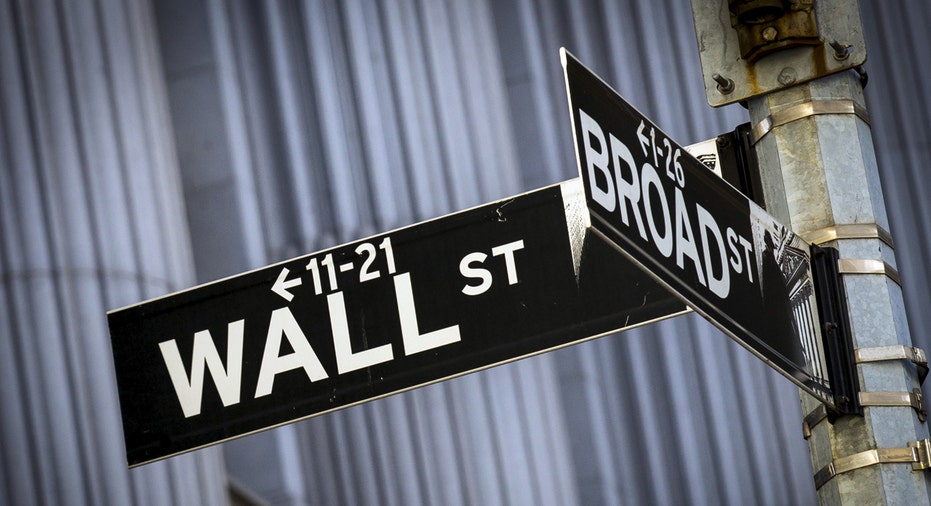Stocks Drop on Weak Data as Oil Prices Fall

U.S. equity markets traded sharply lower Tuesday as oil prices plunged on comments from Saudi Arabia's oil minister and data on the American economy came in mostly weaker than expected.
1. Oil Prices Drop
Global oil prices saw steep losses on Tuesday as investors digested comments from officials of some of the world’s biggest oil producers.
At the IHS CERAWeek conference in Houston, Saudi Arabia’s oil minister, Ali Al-Naimi, said global oil executives should “stick together” through the oil price slump, but warned the markets shouldn’t get too optimistic about a looming production cut.
“The freeze I’m sure will give people in the market some hope that something will happen and it will happen – but we are not banking on cuts because there is less trust,” he said in a speech.
The idea of a freeze was floated last week by four nations including Saudi Arabia, Russia, Venezuela, and Qatar – and proposed production caps at January levels. Since then, some nations, including Iran have voiced skepticism about joining the pact.
Shortly before Al-Naimi’s comments, Reuters reported Iran’s oil minister was quoted by ISNA agency as saying the proposed output freeze floated by four nations last week was “laughable” since many of the nation’s neighbors have increased production in recent years, but now call for limits.
In recent action, West Texas Intermediate crude prices dropped 4.82% to $31.78 a barrel, while Brent, the international benchmark, sank 4.12% to $33.26 a barrel.
2. Home Depot
The nation’s biggest home-improvement retailer reported fourth-quarter earnings that handily beat Wall Street expectations. The company revealed an adjusted profit of $1.17 a share on revenue of $21 billion. The results came in above forecasts for earnings of $1.10 a share on sales of $20.38 billion, and sent Home Depot (NYSE:HD) shares up more than 2%.
During the reporting period, Home Depot saw a boost from rising home prices and wage growth that’s helped put more money in the pockets of the American consumer. While shoppers might not have been shelling out their cash at the mall, they were looking to make improvements to their property in the final three months of 2015. The company said its U.S. same-store sales figures jumped 8.9% during the reporting period, while analysts had expected a 5.3% rise according to Consensus Metrix.
3. Deluge of Economic Data
Home prices in 20 major U.S. metro areas held steady in the final month of 2015, according to data from the S&P/Case-Shiller home price report. On a non-seasonally adjusted basis, prices were unchanged in December from the month prior, compared to expectations for a 0.1% expected increase. From the same period the year prior, prices saw a 5.8% jump, slightly above expectations for a 5.7% rise.
According to the data, San Francisco and Denver reported the biggest year over year gains, while Miami had lower prices in December than November, and 10 cities saw smaller increases during the final month of the year.
David Blitzer, managing director and chairman of the Index Committee at S&P Dow Jones Indicies, said while some Wall Street watchers are concerned the economic recovery is aging after a brutal start to 2015, there are bright spots.
“Some are concerned that the current economic expansion is aging quite rapidly. The recovery is six years old, but recoveries do not typically die of old age. Housing construction, like much of the economy, got off to a slow start in 2009-2010 and is only now beginning to show some serious strength.”
Meanwhile, data from the National Association of Realtors showed sales of existing single-family homes rose 0.4% in January to an annualized rate of 5.47 million units, higher than expectations for 5.32 million units.
Consumer confidence data, though, showed an unexpected drop in February. The Conference Board’s gauge dropped to 92.2 during the month from a downwardly-revised reading of 97.8 the month prior. Economists expected the gauge to slip to 97.
4. Macy's
The department store chain also revealed its fourth-quarter earnings results on Tuesday, which came in better than anticipated. The company said adjusted earnings of $2.09 per share, which excluded $177 million in impairments, store closings, and other costs, on sales of $8.87 billion topped Wall Street forecasts for profits of $1.89 a share on revenue of $8.83 billion. Double-digit online sales growth, the acquisition of Bluemurcury, and the launch of Macy’s Backstage helped add to the top-line beat during 4Q.
Comparable store sales, or those open at least a year, fell 4.3% during the fourth quarter, a bigger decrease than the 2.5% decline from the same period in 2014, but above analysts’ expectations for a 4.7% drop.
Macy’s (NYSE:M) chairman and CEO Terry Lundgren said in a statement that while 2015 was a challenging year for the company, the sales trend improved in January as the weather became colder and store shelves were stocked with coats, boots, hats, and gloves.
“We are encouraged by the way the business responded going into 2016, and we believe we are well positioned to stabilize sales levels this year as we lay the foundation for enhanced shareholder value and sustained, long-term profitable growth,” he said.
He added that focus in 2016 is on further improvement.
“Given our determination to rise above our disappointing 2015 performance, I have reminded my team that our setback last year is a setup for our comeback,” Lundgren said.